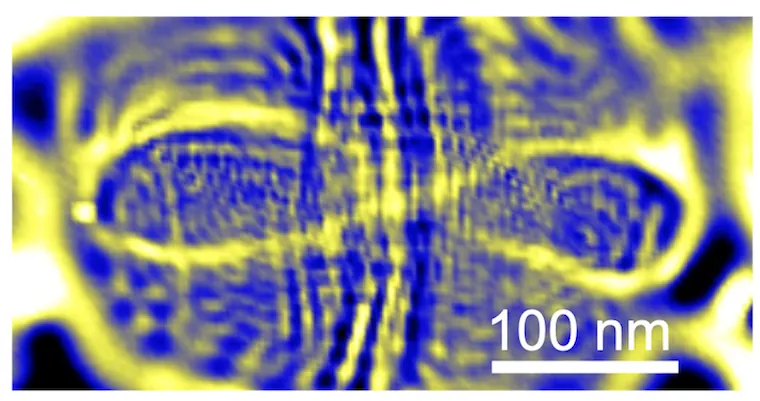
Revolutionary Physics Experiment Reveals Hidden Patterns in Quantum Chaos!
2024-12-02
Author: Charlotte
Groundbreaking Discovery
In a groundbreaking discovery, an international team of physicists, spearheaded by Jairo Velasco, Jr. from UC Santa Cruz, has unveiled compelling evidence of inherent patterns within the chaotic behavior of electrons in the quantum realm. Published on November 27 in Nature, the study validates a theory that has intrigued scientists for the last 40 years, demonstrating that confined electrons in quantum space tend to follow defined paths, forming unique closed orbits instead of exhibiting the erratic behavior commonly associated with chaos.
The Dual Nature of Electrons
Electrons are not just simple particles; they display both particle-like and wave-like characteristics. This dual nature creates fascinating yet counterintuitive phenomena. Under certain conditions, the electron waves can interfere, leading to organized movement rather than disorder. Researchers refer to these orderly routes as 'quantum scars,' which point to a remarkable aspect of quantum mechanics that reveals profound insights into this unconventional dimension.
Advanced Imaging Techniques
To achieve this feat, Velasco’s team employed advanced imaging techniques coupled with precise control of electron behavior in graphene—a remarkable two-dimensional material favored in scientific research. Using a cutting-edge scanning tunneling microscope, the team managed to trap electrons without disrupting their natural flow, effectively casting a keen eye on their movements.
Significance of the Discovery
Why is this discovery so significant? In Velasco's assessment, the ability of electrons to move along closed orbits means their properties can be preserved more effectively while transferring information, heralding potential advancements in the world of electronics. Imagine a new generation of low-power, high-efficiency transistors: the implications for everyday devices like smartphones, tablets, and computers could be revolutionary, allowing for substantial increases in processing power while cutting energy consumption.
Potential Applications
'The most exciting application of our findings lies in information processing,' Velasco remarked. 'By finely 'nudging' these orbits, electrons could travel predictably, enabling refined methods of data transfer.'
Quantum Scars Explained
Quantum scars, a concept originally put forth by renowned physicist Eric Heller in a pivotal 1984 study, help explain this phenomenon. Heller elucidated that if electrons are constrained in certain ways, their movements could align along preferred pathways when influenced by their wave behaviors. 'Quantum scars are not mere curiosities; they provide a window into the enigmatic quantum world,' Heller noted.
Future Research Directions
With the theoretical underpinnings confirmed via this new empirical validation, the doors are now open for researchers to harness these quantum scars for practical applications. The future of nanotechnology may lie in new designs for transistors that capitalize on these unique electron paths, potentially leading to the next leap in computing.
Visualizing Quantum Chaos
Moreover, Velasco's team employed a unique model known as the 'billiard' to illustrate the differences between classical and quantum chaos. By creating a stadium-shaped billiard on just a 400-nanometer graphene sheet, they visually captured the elusive patterns of electron orbits, allowing for real-time observations of quantum chaos.
Excitement from Researchers
This pioneering work by Velasco’s team opens up significant avenues for future research. Plans include developing methods to manipulate and exploit these quantum scars, paving the way for innovative solutions to control electron movement at the nanoscale. Such advancements could unleash a new era of quantum technologies, fundamentally enhancing the landscape of electronics.
Looking Ahead
'I am thrilled that we could successfully visualize these quantum scars,' expressed Zhehao Ge, a pivotal figure in the study. 'Our work is just the beginning in understanding the layers of complexity in chaotic quantum systems.'
Conclusion
The potential of these findings is immense, propelling researchers toward uncharted territories that could redefine technology as we know it. As scientists continue to peel back the layers of the quantum realm, the implications for the future of computing and electronics are becoming clearer and infinitely more exciting. What other secrets does the quantum world hold for us? Stay tuned!









 Brasil (PT)
Brasil (PT)
 Canada (EN)
Canada (EN)
 Chile (ES)
Chile (ES)
 España (ES)
España (ES)
 France (FR)
France (FR)
 Hong Kong (EN)
Hong Kong (EN)
 Italia (IT)
Italia (IT)
 日本 (JA)
日本 (JA)
 Magyarország (HU)
Magyarország (HU)
 Norge (NO)
Norge (NO)
 Polska (PL)
Polska (PL)
 Schweiz (DE)
Schweiz (DE)
 Singapore (EN)
Singapore (EN)
 Sverige (SV)
Sverige (SV)
 Suomi (FI)
Suomi (FI)
 Türkiye (TR)
Türkiye (TR)